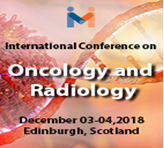Odontogenic Infection Secondary to Endodontic Treatment Complicated with Masticatory and Temporal Abscess: Case Report
Introduction: Odontogenic infection may happen due to toothalveolar infections. The infection can affect the subfascial spaces, especially when affecting the lower molars, although formation of temporal abscesses is unusual. Such abscesses occur with pain, edema, erythema, trismus, fever, and diagnostic confirmation comes from Tomography/Resonance of the Face and laboratory tests. Recommended treatment involves hospitalization, support, empirical antibiotic therapy-Secondarily directed by culture and antibiogram-and surgical drainage.
Objective: To Report an unusual case of complex odontogenic infection and its therapeutic approach.
Resumed Report: A 60-year-old female presented pain and edema on left hemi face after endodontic treatment of the
second lower molar, treated with oral antibiotics. After five days: clinical worsening, being referred to the Red Cross Hospital–Paraná, presenting trismus, edema in left temporal and malar regions, without floating point. Tomography and Resonance of the Face: net collection in anterior region of left masticator and temporal spaces, edema of the masticatory musculature. We have proceeded with hospitalization and treatment with intravenous Ceftriaxone, Clindamycin and corticosteroid for 4 days, without any improvement. Surgical collection drainage conducted in left masticator and temporal spaces, keeping Penrose drain for 5 days. Favorable evolution and hospital discharge followed, with oral antibiotic and corticosteroid therapy for 10 days. Ambulatory denouement: no signs or symptoms of infection, referral to dentist for follow-up.
Conclusion: Odontogenic infections can evolve to extensive abscesses, systemic impairment and sepsis. Despite clinical efforts, early diagnosis and surgical approach are the most important measures on complex infections.
 Spanish
Spanish  Chinese
Chinese  Russian
Russian  German
German  French
French  Japanese
Japanese  Portuguese
Portuguese  Hindi
Hindi 



